Soaking tomato seeds before planting
For many years, tomato has been the main vegetable on our table. But in order to get high quality fruits and a good harvest, you need to follow the technology of growing this crop. And a very important measure is the correct preliminary preparation and processing of planting material before sowing. According to experts, with the correct soaking of tomato seeds, they are disinfected and the yield increases by 20-25%. Unlike pepper, tomato planting material does not have inhibitors that prevent their germination, tomatoes germinate well without pretreatment. And at first glance it may seem that they don't need to carry out processing. But preliminary soaking will allow the seedlings to appear more amicably, significantly reduce the likelihood of diseases such as black leg, white, gray, stem and root rot, phomosis and others.
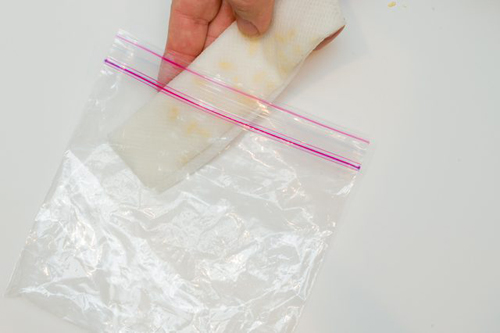
The soaking procedure includes several stages: selection of seeds, disinfection, soaking or bubbling.
Selection of full-weight seeds
Before proceeding with processing, it is necessary to select high-quality full seeds, from which healthy fruitful tomato bushes will grow, and discard hollow ones. To carry out this operation, you need to make a solution of ordinary table salt - 1 teaspoon of salt is dissolved in a glass of water. The seeds are immersed in the resulting solution and mixed. After 5-10 minutes, the empty ones will remain floating on the surface, while the large, heavy and full ones will sink to the bottom. They need to be rinsed and dried for further sowing. It may happen that in addition to empty seeds, small full seeds will remain on the surface, which are able to germinate and give a good harvest. Therefore, if there is little planting material, this operation can be omitted.
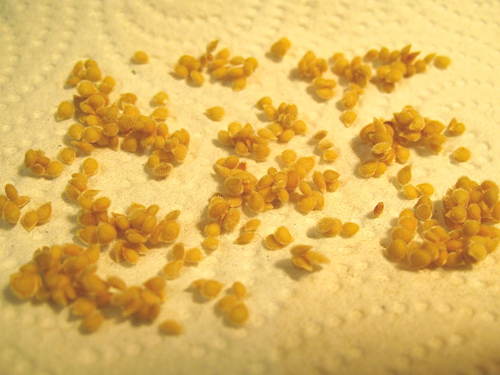
Disinfection
The disinfection procedure is a mandatory stage in the preparation of seeds for all crops, except for purchased processed ones. Spores of the late blight fungus and other pathogenic microorganisms can enter the embryo. Initially, normal seedlings grow from such planting material, and healthy plants grow. But over time, the spores begin to multiply, and the mycelium of the fungus penetrates into the plant tissue. Therefore, it is necessary to carry out disinfection. Usually, potassium permanganate is used for this (or in another way, potassium permanganate). A 1% solution is prepared for processing. To do this, 1 g of potassium permanganate is dissolved in 100 ml (0.5 glass) of water at room temperature. The seeds are placed in the solution for 20 minutes, after which they are thoroughly washed under running water.
But pickling with potassium permanganate also has disadvantages. Firstly, tomato seeds tend to stick together and when they stick together, they will not receive proper disinfection. Secondly, potassium permanganate disinfects the infection only in the surface layer; potassium permanganate does not act on pathogens in the embryo. Therefore, for tomatoes, another method is preferable - heat treatment by exposure to hot water (on an industrial scale, such treatment is carried out in thermal cabinets). To do this, you need to pour water at a temperature of 52-53 degrees into a thermos and place the planting material there. The thermos is closed and the processing takes 20 minutes. Heat treatment provides one hundred percent disinfection. The specified temperature must not be exceeded, since at a higher temperature, a loss of germination occurs.
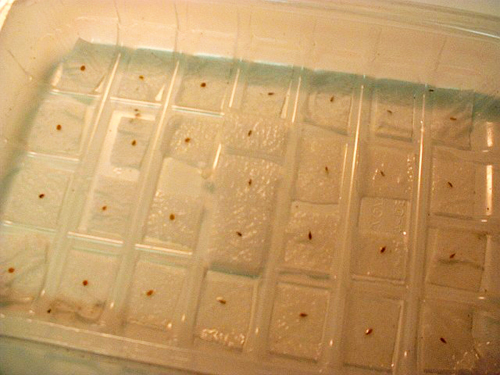
Complete relief from infection is also ensured by keeping the tomato planting material in a phytosporin solution. It is a biological fungicide that actively suppresses all pathogens. It is preferable to use phytosporin in a paste. First, the paste must be dissolved 1: 2 (if the paste is 200 g in a package, it is diluted in 400 ml of water at room temperature). Dissolve 1 drop of the resulting stock solution in 0.5 cups (100 ml) of water. The duration of disinfection in phytosporin is 1-2 hours.
Soak
The soaking process is that the tomato planting material is completely poured and left in this state for 18 hours. If the water turns brown during the soaking process, it is changed. This procedure is done several times if necessary. The volume of water should be approximately 50 times the volume of the seeds. During soaking, the planting material must be mixed several times. There is no need to be afraid that the seeds will suffocate. This is what Doctor of Biological Sciences T. Yu. Ugarova writes about this in her book: “The seeds do not need oxygen when they swell. As long as the seed coat is intact, breathing can be anoxic (anaerobic) and no air is required. But from the moment when, under the influence of great pressure developing inside the swollen seed, the seed coat bursts, the seed requires oxygen. The higher the temperature at which germination takes place, the more intensively the seeds breathe and the more important it is for the germinating seeds to have free access to air. " Based on this, the process must be strictly controlled - do not soak the tomato planting material for more than 18 hours.
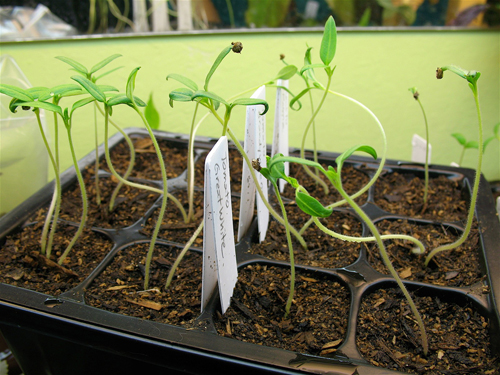
If you use tap water for soaking, it must first settle. But it is better to take melt water. It is obtained by melting ice or snow, is biologically active and has a beneficial effect on seed germination and plant development. In ordinary water, the molecules are arranged chaotically, while in thawed molecules they are ordered and have a clear structure. Ordinary water consists of two components: fresh (the so-called "living") and heavy (or "dead"). Fresh and heavy water have different freezing points. Using this difference, you can get "living" water in the refrigerator. To do this, you can pour ordinary water into a container and place it in the refrigerator (in the freezer compartment). When most of it freezes, the unfrozen water must be drained. After the ice has melted, purified "living" structured water is obtained.
Soaking will be more effective if done in a stimulant solution. For tomato, an epin solution is preferred. There are only 50 drops in a test tube. It is necessary to dissolve 2 drops of this drug in 100 ml of water and soak the planting material in this solution for 18 hours. In this case, the temperature of the solution should be 25-30 degrees. Such treatment will accelerate the emergence of sprouts and increase the resistance to various types of stress in seedlings and adult plants. Instead of epin, you can use zircon (dilute 1 drop of the drug in 250 ml of water, soaking lasts 16-18 hours) or aloe juice (the seeds are placed in undiluted juice for 24 hours).
Germination
After soaking, the planting material is germinated until shoots appear. For germination, it is most convenient to use cotton pads. For one variety, take two discs, moisten them and wring them out. The discs should be wet but breathable at the same time. The name of the variety is preliminarily written on the upper disk with a pencil (the pencil is not washed off). The seeds are spread evenly on the lower disk, covered with the upper disk and the resulting sandwich is placed in a plastic bag. The bag does not need to be completely closed, there must be air access. Seedlings appear quickly, in 3-4 days. It is important not to miss this moment so that they do not outgrow.
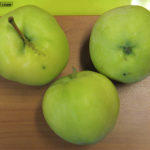
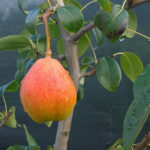







It is imperative to pickle tomato seeds! I had a case that year - I planted tomato seeds in the ground without dressing, and when they reached a height of 30 cm, spots began to appear on the trunks and leaves. As it turned out, it was bacterial cancer, an incurable disease.After I found out what kind of variety brought this infection, it turned out to be Persimmon, the seeds were bought in a store from an official manufacturer. As a result, I almost lost all the seedlings, barely saved 50% of the plants. This year I have already etched it with potassium permanganate for an hour, and then soaked it in Epin's solution for a day. After this treatment, the seeds germinated from 5 to 10 days. Now they are transplanted into a greenhouse, and not a single plant is sick.